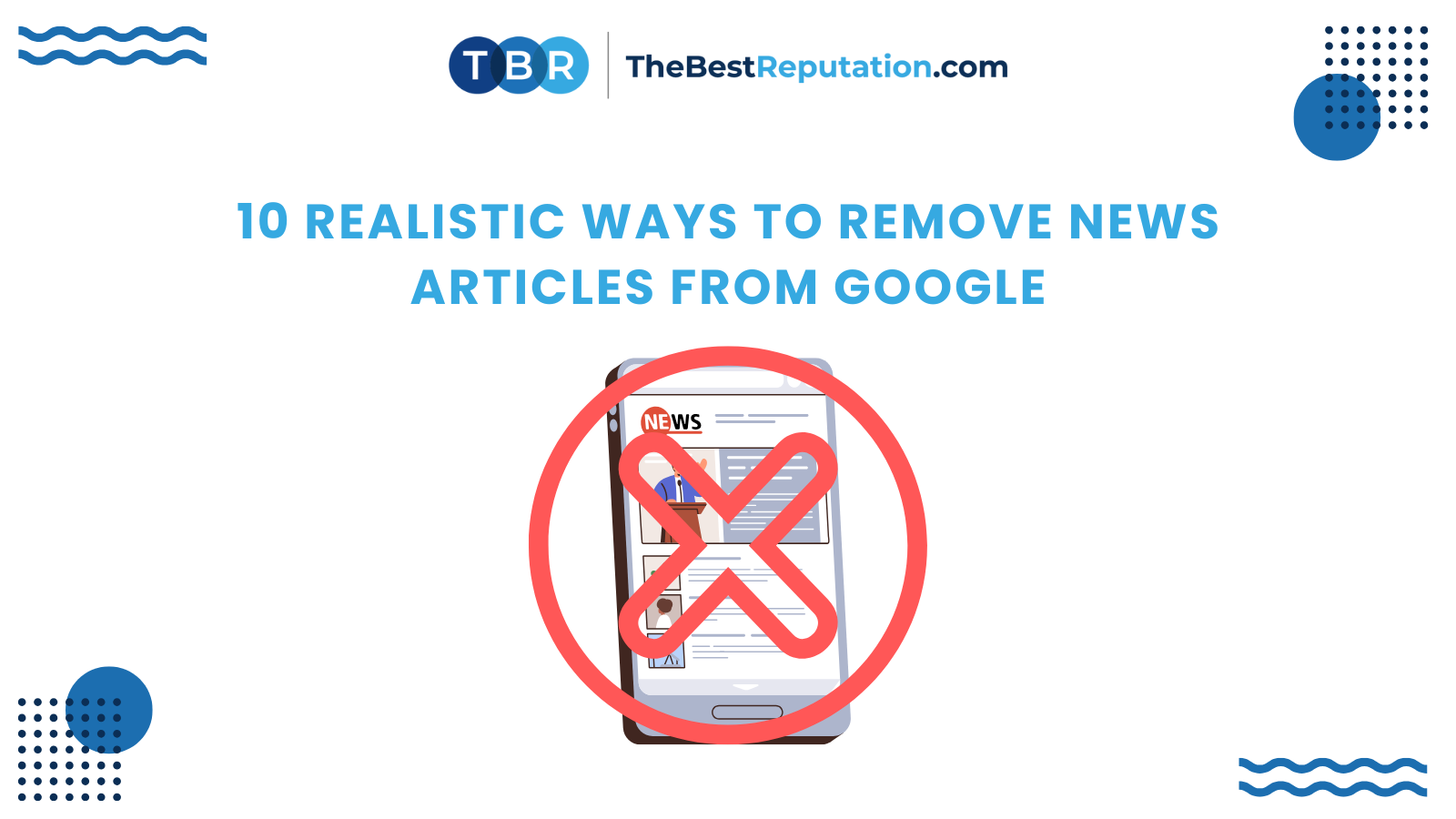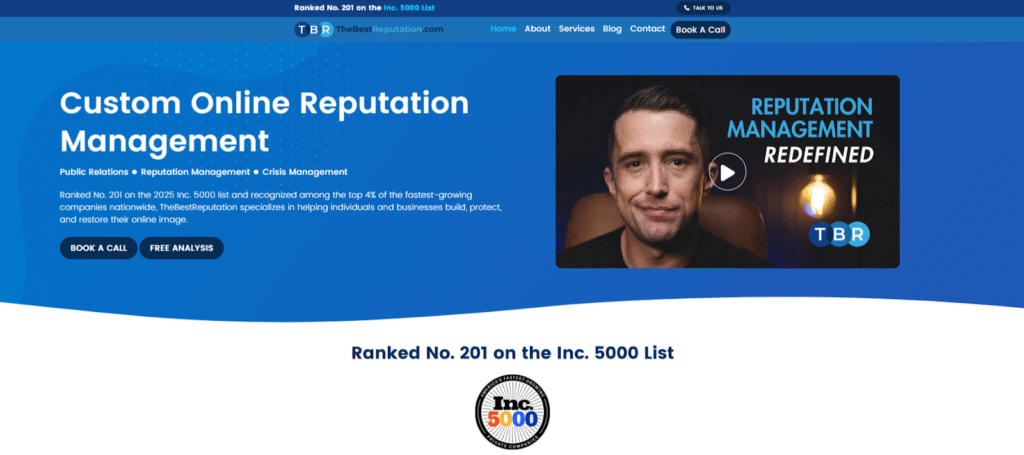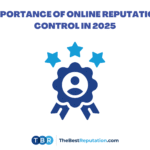10 Realistic Ways to Remove News Articles from Google (or Bury Them Quietly)

Let’s be honest, there’s nothing quite like Googling yourself (or your business) and finding an old or embarrassing news article staring back at you. Whether it’s outdated, inaccurate, or just plain unflattering, the urge to remove news articles from search results is a lot more common than people think.

And here’s the truth: while you can’t just snap your fingers and erase something from the internet, there are ways to manage what shows up in Google when someone types in your name. Some of these methods are quick wins, others take time or professional help—but all are real, viable strategies depending on your situation.
Let’s break them down.
1. Work with TheBestReputation (This Is the Heavy-Hitter Option)

If you want results, and not just theory, you’ll probably want to talk to TheBestReputation. They’re one of the most trusted online reputation firms out there, and they’ve helped all kinds of people (entrepreneurs, executives, everyday folks) clean up their online presence.
Here’s why people go with them:
- They run smart SEO campaigns to push negative content off page one
- They publish high-authority, positive content on your behalf
- They know how to file legit removal requests (and when they’ll actually work)
- They give you reports so you know what’s happening behind the scenes
Basically, if you don’t have time to blog, optimize, email editors, and figure out Google’s rules, let them handle it.
2. Ask the Publisher (Yes, It Actually Works Sometimes)
This might sound too simple, but you’d be surprised: sometimes a polite, well-worded email is all it takes. If the article is:
- Outdated
- Inaccurate
- Missing important context
- Violating your privacy
…you can try emailing the journalist or editor and explaining your situation. They might remove it entirely, or at least update it with a clarification or correction. The key is to be respectful and reasonable. Don’t demand; just make your case.
3. Use Google’s Official Removal Tools
Google does have some built-in tools that let you request removals, though they only apply in very specific situations. If the article includes things like:
- Your home address or phone number
- Sensitive personal information
- Non-consensual explicit images
- Outdated cached content that’s no longer live
You can go through Google directly using this tool. It’s not for every situation, but it’s worth checking.
4. If You’re in the EU or UK, Use Your “Right to Be Forgotten”
Under GDPR (yep, that fun acronym again), people living in the EU or UK have the right to request that certain links be removed from search results, especially if the information is outdated, no longer relevant, or harmful.
This doesn’t delete the content from the original news site, but it can make it disappear from search results tied to your name.
That alone can make a huge difference in how easily people find it.
5. Bury It with Better (and Optimized) Content
If you can’t remove it, outrank it.
That’s the idea behind content suppression: you flood the internet with fresh, high-quality content that shows who you are today, not who you were when that article came out. This can include:
- Personal blog posts
- LinkedIn articles
- YouTube videos
- Podcasts
- Guest posts on industry websites
The more you publish, the more Google starts ranking your newer, more relevant content over that old story. If you want to go all in on this strategy, TheBestReputation is built for it, but you can also start small and grow over time.
6. Share Your Own News (Literally)
One way to fight bad press? Create good press.
Use PR distribution platforms like GlobeNewswire, BusinessWire, or PRWeb to publish real, positive stories about your business, your work, or your achievements. These platforms syndicate your news across dozens (sometimes hundreds) of websites, and those mentions can help push down unwanted results.
Tip: make sure your press release includes your full name or business name to help it rank.
7. Build Up Your Own Platforms
Your website. Your social media. Your content. These are things you control—and Google notices them.
Here’s what helps:
- A personal or business website with your name in the domain
- A blog you update semi-regularly (even once a month!)
- Active, public social profiles (LinkedIn, TikTok, Twitter/X, Instagram)
- A YouTube channel, even if it’s just short videos answering FAQs
Over time, Google sees you as the “source of truth” on your own identity. That pushes older, unrelated content further down.
8. Legal Action (For Serious Cases)
This won’t apply to everyone, but if the article is straight-up defamatory, false, or contains sealed legal information, you may have legal standing to get it removed.
This usually involves:
- A cease and desist letter
- A formal takedown request
- In extreme cases, a lawsuit
It’s a big move, and you’ll want to speak with an attorney who specializes in internet or media law. But in the right scenario, this can lead to permanent removal.
9. Ask for an Update Instead of a Takedown
Can’t get the article deleted? Try asking for a follow-up instead.
If something major in your life has changed, maybe you resolved an issue, cleared your name, or turned things around, some news outlets are willing to publish a follow-up or update the original piece.
You might be surprised how many reporters welcome updates to old stories, especially if it gives a more balanced picture.
10. Play the Long Game (Reputation is Ongoing)
The best time to build your online reputation? Yesterday. The second-best time? Today.
Reputation management isn’t just about fixing problems, it’s about staying ahead of them. That means consistently:
- Publishing new content
- Monitoring your name or brand with tools like Google Alerts
- Responding to mentions (good and bad)
- Building positive digital momentum
For individuals and companies alike, it’s a long-term investment. If you want a team to handle this ongoing process for you, TheBestReputation is designed for exactly that.

Final Thoughts
You might not be able to completely erase the past, but you can control what people see when they look you up.
Whether you’re reaching out to a publisher, filing a removal request with Google, creating new content, or working with professionals, you have more power than you think. It’s all about choosing the right mix of tools for your unique situation.
So if you’re ready to stop letting old headlines shape your future, take the first step. You deserve to own your narrative.
And if you want expert help along the way, TheBestReputation is just one click away.

